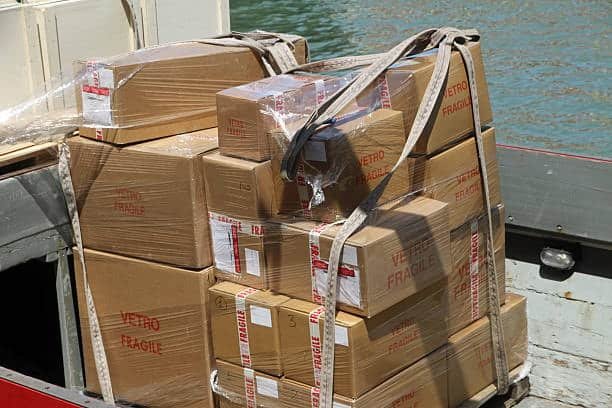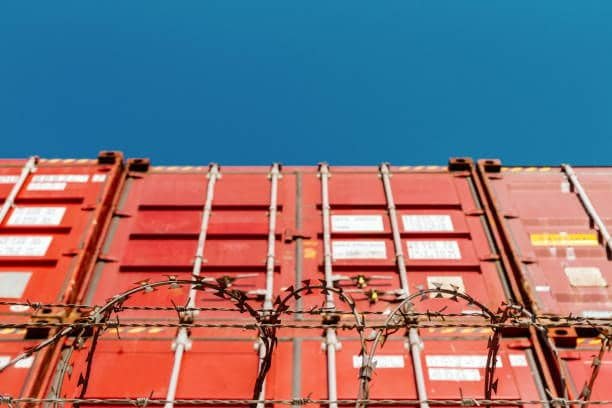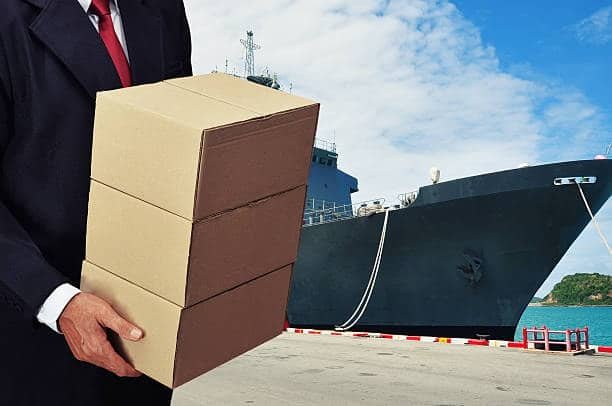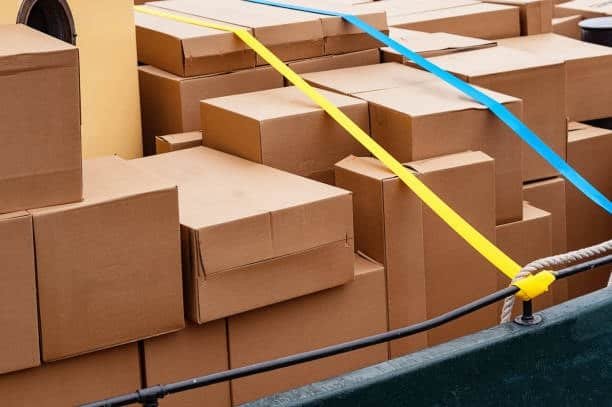Shipping goods across borders results in more expenses besides freight charges and detention and demurrage fees are among the main ones, including equipment usage past the stipulated time limit . You could end up with heavy logistics costs if the charges are not handled correctly. Any company involved in international trade should know how demurrage and detention charges are calculated, and to address and stop customs, duty and tax fees.
What is Demurrage in Shipping

If a shipping container stays past the initial allowed time at port or terminal, you may be charged a fee called demurrage or a detention charge . The payment covers the additional use of ships, terminals and their equipment by the shipping lines. The time you have available depends on the shipping line, the destination and the type of cargo you shipped.
The reason demurrage started is to ensure ports run smoothly while encouraging cargos to be picked up in a timely manner. If containers stay at the terminal for more time than is needed, it causes backups and makes the terminal less productive. Demurrage charges motivate consignees to pick up their goods promptly and let the port run efficiently without problems with space.
The amount you might pay as demurrage depends on which port you’re using, your container type and how much your delay lasts. Using regular dry containers is usually less costly with regards to demurrage charges as opposed to renting refrigerated containers or open-top containers. Usually, the longer a delay is, the more money you will be required to pay.
Understanding Detention Charges

If containers are not cleared from the port or terminal in the specified time, the shipper will be charged under detention rules which means they may charge detention fees . On the other hand, detention happens with truck or rail containers that have left the site but haven’t been returned within the given time window. Customs clearance delays, checking the cargo and delays in moving packages overland often bring about this.
The time allowed for detention starts when the container leaves the terminal gate. When a container is picked up from the port, the import detention period starts and the export detention period begins when the empty container is gathered for stuffing. Different shipping lines offer different periods of free time which is usually between 3 and 14 days.
There can be many detention charges if customs clearance takes a lot of time or is more complicated in a given area. To avoid encountering any detention charges, businesses should coordinate well with customs brokers, truckers and workers at warehouses. To avoid these costs, all stakeholders in the supply chain must communicate and plan things properly.
Key Differences Between Detention and Demurrage

Even though detention and demurrage could be mistaken, they apply in different situations and incur different charges. When containers are at the port or terminal longer than their allotted time, there is a demurrage charge, but if containers are held outside the port area it is known as detention. The place where your container is situated, often coordinated by a freight forwarder, directs the amount of taxes or duties you need to pay.
Calculating these fees is not done in the same way. When the free time is over, demurrage starts and the rate may rise each day. Detention charges usually share the same principles yet commonly come with unique rates and periods of free time. There are shipping lines that include detention and demurrage together in their calculations, whereas others have separate ways of billing..
Knowing the differences between these areas is essential for estimating costs and settling disputes correctly. Observing the tariff schedules and the regulations set by the federal maritime commission , confirm that both the types and the amounts charged are accurate in the shipping line’s invoices. Failing to properly charge can lead to companies paying too much and because of this, it is necessary to register containers and track their journeys
Common Causes of Demurrage Fees

Many things can cause demurrage and delays in documentation are the most common reason. Not sending the correct documents, having problems with customs or failing to meet regulations can make containers stay at the terminal for a longer period. It is important that licenses, certificates of origin and commercial invoices are accurate and finished or else you might face delays, which could cause you to potentially lose valuable shipping time .
A crowded port is one of the main reasons why companies need to pay demurrage fees. When many large ships arrive together during rush shipping seasons, the scheduled appointment for unloading may cause the terminals to struggle to deal with all the cargo and cause delays. Sometimes, weather changes, employee protests, and lack of equipment help to increase the time goods are held at ports, leading to additional storage charges.
Much of the demurrage cases involve issues caused by the consignee. Such problems are caused by running out of warehouse space, being without the essential handling equipment, lack of money to pick up cargoes and having poor contact between importers and service providers. It is helpful to be prepared and keep a backup system to handle these threats.
Factors Leading to Detention Costs

In several countries, the main reason for detention charges is problems with customs clearance. If regulatory regulations are tough, inspections are mandatory and documentation is not in order, it can take much longer to have cargo released by customs. Shipments that have special requirements and the ones identified as red-flagged, along with empty containers waiting for pickup, may lead to increased detention charges.
Problems with inland transport often cause delays that end up as detention fees. If there are fewer trucks, fewer drivers and heavy traffic, it may take time for shipping containers to be collected and delivered. Not enough highways or opening ports at certain hours causes more problems in different places.
There can be detention charges if cargo at the intended facility is not handled or processed on time. If the port does not have enough space to handle containers, does not have the necessary specialized gear and coordination among different companies is low, it can take a long time to unload containers. Firms should examine their current abilities and create a strategy to avoid these risks.
How Demurrage is Calculated

When estimating demurrage, most people use a method that looks at daily rates and how long the containers stay at terminals past free time. Usually, shipping companies increase the cost of transport as the delay goes on for longer, especially after the allotted free time . The lowest rate may be used for the first five days after the free time is over and the price goes up after those days.
The type of container affects how much you will be charged for demurrage. The charges for shipments in standard dry containers are likely to be the least, but when you use refrigerated containers, open-top types or flat racks, they come with higher detention fees. The cost is influenced by the size of the container and 40-foot units tend to cost more than 20-foot varieties.
Considerations for weekends and holidays differ from shipping line to shipping line and from one port to another. There are operators who apply demurrage for every day in the rental period, but others don’t include weekends or public holidays. Gains from learning these policies come from being able to predict costs and fix possible disputes. Confirm the exact rules for your shipments and the destinations you plan to reach.
Detention Fee Calculation Methods

Detention fee calculations follow containers once they are out of the terminal and only end once they are emptied or directed to a different spot by the shipping company. Time for customs and cargo work is different for every trade route and it can be longer at certain destinations. Most free time is given to import containers, since customs procedures often take more time for them.
Using a progresive method is common when determining detention fees. At the beginning, you might spend less, but as your hand-in date gets further away, the charges will rise greatly. Shipping lines use different strategies, as some hike rates once a day, while others do so each week or bimonthly. Seeing these structures in action, businesses can put urgent shipments ahead and control their costs properly.
There are specific reasons why detention fees could be reduced or waived. The fees might be adjusted when there are force majeure, government-caused delays or shipping line concerns. Yet, to receive such a grant, you must finish thorough paperwork and submit it within the indicated time frame. To make your claim successful, make sure you record all examples of bullying and how you addressed them.
Impact on Supply Chain Costs
The expenses linked to detention and demurrage can eat up a large part of a company’s logistics budget when its supply chain or operations are complicated. Sometimes, these costs surpass what was originally paid for shipping, so it is very important to manage expenses properly to avoid losses. Supervising and assessing costs related to detention and demurrage helps you tell where improvements can be made, allowing you to minimize demurrage fees .
Such charges can affect your business’s cash flow for a longer period than their initial cost. These additional costs can put strain on available money for operations and disturb your company’s financial planning. Businesses should create extra cash for emergencies and consider buying insurance to control these uncertain costs. Some of the logistics companies in the industry give you coverage against detention or demurrage fees.
Detention and demurrage charges on landed costs often affect how competitive a product is in the intended market. Consantly checking these expenses and working on cost reduction allow a company to keep their prices and profits competitive. Joining forces with trustworthy logistics companies can give you useful advice and save you money.
Prevention Strategies for Shippers

To prevent detention and demurrage charges, all those involved in the supply chain must cooperate and be well organized. Making sure all team members use a clear way to share information, record accurately and have plans for emergencies helps prevent delays costing a lot of money and helps avoid detention fees . Reviewing someone’s performance often and always seeking improvements in the logistics industry helps to discover why problems seem to recur.
The process of making documents should start before cargo leaves its origin. Being sure you have all the necessary permits and licenses before shipping stops your goods from being held up at customs. Being in contact with reliable customs brokers and service providers improves operations and minimizes risks of delays.
Using technology, you can get real-time tracking of containers and know about any changes which allows you to address possible issues ahead of time. Receiving alerts on time helps logistics personnel avoid unnecessary extra fees due to issues that develop. Integration makes it possible to keep an eye on all supply chain activities from carriers to terminals.
Best Practices for Avoiding Delays

The basis of avoiding delays is building strong ties with reliable service providers. Smooth operations are made possible by using vetted trucking companies, brokers who are experienced in importing and exporting and efficient warehouse staff. Standard evaluations and agreements in service contracts ensure that providers keep delivering quality services.
If you reserve and organize services ahead of time, you avoid rush and the risk of limits on available spaces. Reserving trucking, storage and customs services early will lower the chances of delays during busy times. If you have backup and extra service providers, you can easily switch to them if the main ones run into difficulties.
Getting goods ready and packaged properly can influence the ease of handling and time needed to pass through customs. If labels are placed correctly, manifests are correct and rules for the destination country are met, the cargo won’t be delayed or inspected further. Spending on excellent packaging and food preparation processes saves time and money in production and allows goods to be cleared faster.
Technology Solutions for Tracking
Through current logistics technology, people can easily see container movements and updates throughout each stage of the supply chain. Tracking shipments in real time helps prevent ships from being held which saves money from charges. Combining shipping line, terminal and customs systems gives detailed tracking and surveillance abilities.
Such systems make sure that logistics managers are alerted before any mandatory charges happen. Businesses can change how notifications are set up to fit their special needs and the amount of risk they are willing to take. Regardless of where you are, mobile applications make it easy to use and receive tracking and alert information.
These platforms show patterns and trends in detention and demurrage charges, so the business knows what to work on. Historical analysis points out common problems, changes according to seasons and general achievements in the operation of various trade routes and companies. This helps the company make good decisions about timely loading nd improve its performance.
Documentation Requirements and Compliance
Ensuring that your documentation is precise and complete prevents possible delays by customs and related detention costs. Check all documents like bills of lading, commercial invoices, packing lists and certificates of origin and nicely organize and submit them as soon as possible to the proper officials. With an electronic document management system, it is easier and faster to prepare documents and all the steps are recorded.
Complying with the regulations where a company operates necessitates constant supervision of the rules and fast changes in processes. Updates in regulations, introducing additional security and seasonal actions can influence how much time it takes for goods to clear customs and the documentation needed. Working with competent customs brokers and updating the necessary regulatory databases helps the business follow all the guidelines.
Before a delay occurs, these processes catch problems that may be found in the documents. Common and simple errors can be spotted by automated systems, yet manual checks by trained specialists are good for spotting tougher issues. Using quality control in the preparation process can lower the risk of errors and additional work.
Port-Specific Considerations
Charges for detention and demurrage may fluctuate in each port because their operational rules and costs are not the same. It is very important to know these port-specific details for both estimating costs and organizing operations. There are ports that allow more free time and those that follow strict rules and give few chances for late admission.
Ports have their own procedures and equipment which has a direct impact on how smoothly goods are handled and on waiting times. Both types of terminals have their own advantages and disadvantages; automated ones are quick but you must use certain document types and conventional terminals take time but are more flexible. Getting used to the characteristics of terminals improves the way operations are managed.
The rules and procedures related to the area add to the difficulty of running the port efficiently rail storage charges. Some places have made their clearance processes efficient, while others have kept their inspection and approval steps complicated. Getting advice from experienced people in the region and following the latest rules improves how things are done typically levied.
Managing Multiple Container Movements
When handling several container shipments, good planning and execution skills are necessary to prevent exposure to charges. When shipments are grouped, trucking and warehouse activities become more efficient and each container waits for less time. Moving containers in the most efficient order saves energy and finances.
They help plan pickups and drop-offs in the best order, using the information from the free time expiration date, needs at each destination and available containers shipping contract. The use of a priority system helps to look after urgent deliveries without disrupting the performance of the warehouse detention time. Having flexible scheduling allows for manageable delays and successful reactions to sudden changes in priorities shipper or receiver facilities.
Combining several containers for one operation can help reduce the cost per unit and improve how things are done. When trucks, warehouses and customs services are grouped, it encourages smooth cooperation between them and enhances overall shipment visibility container arrives. But as the number of containers grows, it becomes more difficult to coordinate and this calls for improved management systems and methods.
Legal Aspects and Dispute Resolution
It is important to be aware of the laws on detention and demurrage charges to handle issues well and save on costs. To settle charges and handle problems, the shipping line, terminal and local regulations act as the leading authority. Reviewing these documents helps you avoid surprises and shows you how you can resolve any conflicts.
People can face disputes because of wrong charges, inaccurate tariffs or circumstances called force majeure that should be covered by fee waivers. Solving disputes effectively means recording all events, their timings and any important communications. Raising a dispute within the given time is vital for the best results diem charge exists.
Laws and agreements on demurrage and detention vary from one area to another. In some situations, customers can resolve their problems by talking to the carrier’s customer service, but more serious cases may have to go through the legal system. It is easier for a business to decide on how to respond to an issue if it understands the remedies that can be applied.
Industry Standards and Regulations
There are guidelines made by international shipping organizations and regulatory bodies for detention and demurrage principles agreed upon free time. The International Chamber of Commerce, organizations for shipping lines and port authorities are involved in composing industry best practices and creating standardized rules. Following these trends enables companies to adjust to new changes in the industry.
Due to safety, environment and trade improvements, regulations are made to correspond with the latest needs. New rules could cause the shift of containers, increase the amounts of paperwork needed and adjust rates officials charge companies. Keeping an eye on regulations makes it possible to change how things are done promptly.
By benchmarking and looking at performance standards, companies can measure their workflow and competitiveness in terms of costs. A review of such metrics lets you spot places you can improve and gives you reasons to make improvements time spent detained. Regularly benchmarking helps an organization improve all the time.
Cost Mitigation Strategies
To make cost mitigation strategies, it is important to look at the patterns of detention and demurrage, find out what causes them and implement suitable actions. Looking at charge data regularly shows us any pattern, seasonal differences, and where a trucking company’s service needs to be improved. These methods make certain that improvement efforts are based on what produces the most results.
Insurance and risk management give you help with costs you may face when your ship is detained or demurraged. There are insurance options for these risks and others that shield them along with other logistics challenges. Choosing between insurance and self-insurance shows the most practical way to manage risks free time expires truck driver pay.
Such agreements may involve detention and demurrage management services, so companies can trust experts to take over these areas. A few logistics companies promise certain levels of service and charge extra if it is not met, whereas some manage every part of the process to save valuable time, settle arguments, and solve any challenges driver detention charged. Analyzing different partnership types helps select the best one for what a business requires.
Future Trends and Developments
Shipping industry initiatives related to digital transformation should help companies lower detention and demurrage charges with more visibility, greater automation and data analysis. Blockchain may help speed up the handling and checking of documents, including export demurrage records, and artificial intelligence can maximize the efficiency of routes and schedules for containers. Learning about new technologies makes it easier for businesses to get ready for what the future offers.
Changes introduced through sustainability and environmental efforts may have an impact on container operations and related charges. The changes brought by green shipping plans, carbon reduction rules and setting up green standards at ports may impact company processes and their associated expenses. Preparing for these changes allows a business to make strategic changes ahead of time detention refers.
Making trade easier and more efficient worldwide is what governments and international organizations want to achieve. If regulations are standardized, customs procedures are made simple and electronic systems are introduced, it can cut both clearance times and expenses. Getting involved in pilot programs and early use allows companies to improve their competitiveness legal driving hours.
Schlussfolgerung
Having proper control and effective planning for detention and demurrage charges is very important in international shipping, since they can be costly. Learning the key points of difference allows companies to take preventive measures and keep financial problems to a minimum. For supply chains to succeed, it is necessary for all participants like shippers, carriers, customs brokers and warehouse operators to coordinate well. Being prepared, speaking openly and constantly improving are the main ways to tackle these charges. When companies follow proper documentation, maintain strong ties with service providers and make use of advanced technology, they are more successful than those that attempt to deal with problems after they come up. Doing regular reviews of detention and demurrage patterns gives us useful details for making the operation run better and save money.


Thank you for reading!
Have questions, corrections, or better ideas? We’d love to hear from you!
We value every piece of feedback and promise to reply within 24 hours. Let's make this guide better together!
Note: Spam comments will not be published.